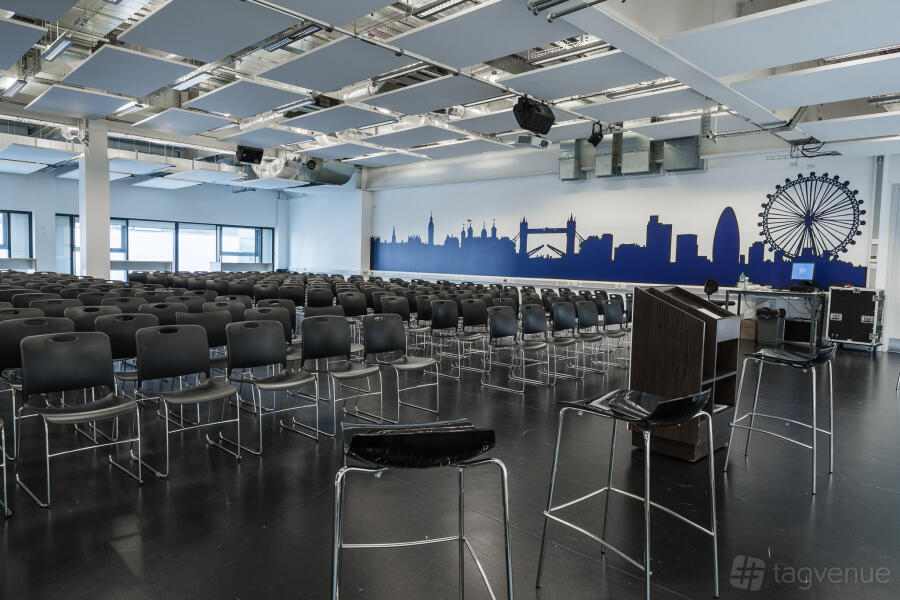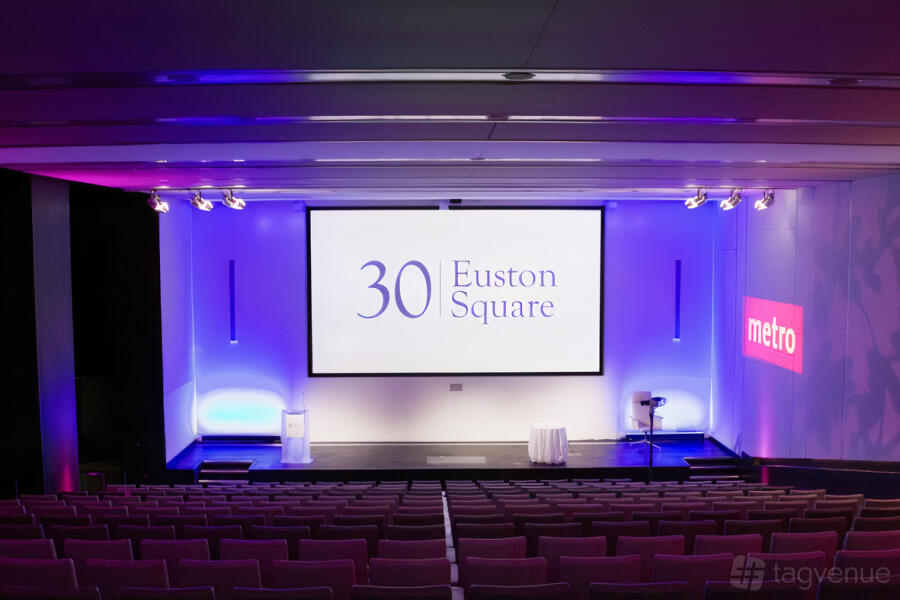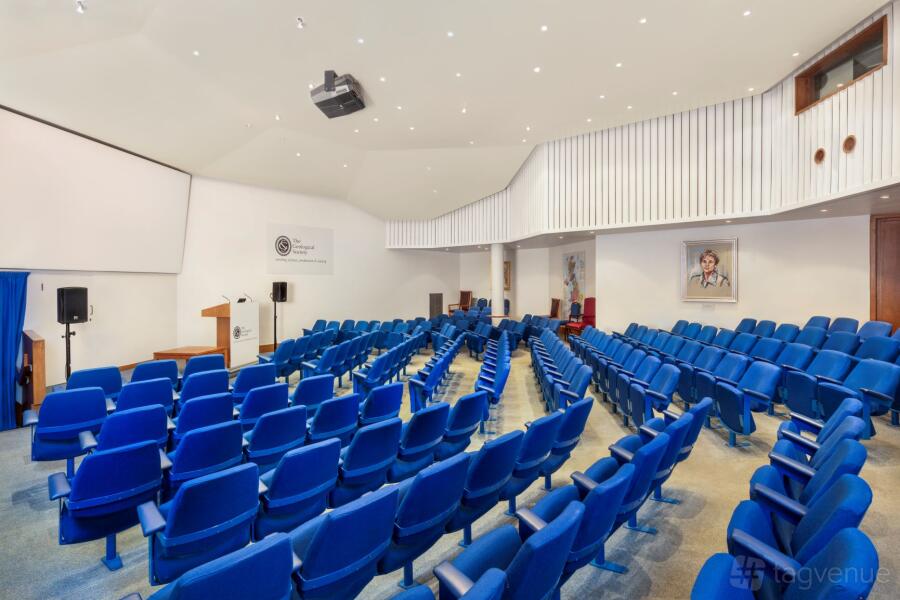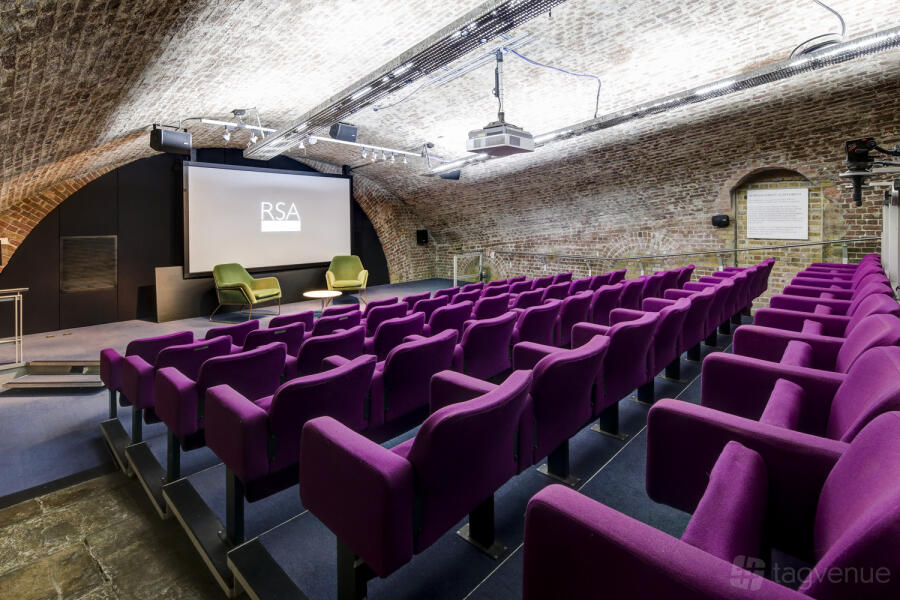Top Lecture Theatres in London
Whether you’re planning a guest lecture, film screening or conference, our selection of the top lecture theatres in London will make organising your next event hassle-free. From dedicated lecture theatres and lecture halls to private libraries and state-of-the-art auditoriums, Tagvenue can recommend something to suit your specific requirements. Our round-up of the city’s best lecture theatres includes dedicated educational and training spaces as well as classrooms, computer rooms and performance spaces, so you’ll have plenty of options to choose from.
-
Lecture Theatre
210 guestsOne Birdcage WalkSt. James's Park StationSt James, LondonDDaisy B.
“Very helpful team on site, lovely well kept venue and great location.”from £2585
hire fee / per morning -
Main hall
300 guestsLondon Academy of Excellence TottenhamWhite Hart Lane StationTottenham, LondonSStefan K.
“Great venue in terms of size, equipment, facilities and location. Internet speed very fast as well.”from £150
hire fee / per hour -
Main Hall
400 guestsConway HallHolborn StationHolborn, LondonEElizabeth B.
“I cannot recommend them enough. London is full of great venues but not many have a team like this one.”from £1400
hire fee / per evening -
Screen 1
103 guestsEveryman Borough YardsLondon Bridge StationSouthwark, London#Supervenue
KKaty R.
“The staff were super helpful, and the venue went down really well with all of our attendees.”from £900
minimum spend / per session -
Screen 1
145 guestsEveryman BroadgateLiverpool Street StationCity of LondonRRobert B.
“Brilliant organisation and response from the team. Would definitely use again.”from £1250
minimum spend / per session -
Auditorium & Exhibition Space
300 guests30 Euston SquareEuston Square StationCamden Borough, LondonLLinette I.
“Location, facilities, staff, decor - all excellent.”from £5000
hire fee / per evening -
Lecture Theatre & Library
172 guestsThe Geological SocietyGreen Park StationMayfair, LondonLocated on the ground floor, the Lecture Theatre and Lower Library provides an inviting setting for conferences. The Meeting Room is accessible through two doors from the Lower Library.from £2180
hire fee / per morning -
Nancy Knowles Lecture Theatre
120 guestsShakespeare's GlobeMansion House StationSouthwark, LondonNamed after American philanthropist and patron of the arts, Nancy W Knowles, this space can seat up to 120 people and is perfect for smaller presentations and lectures.from £1000
hire fee / per hour -
Cowdray Hall & Council Room
180 guests20 Cavendish SquareOxford Circus StationMarylebone, LondonNNatasha J.
“The venue itself is beautiful and is in a great location. It is also fully accessible.”from £3400
hire fee / per day -
The Durham Street Auditorium
60 guestsRSA HouseCharing Cross StationThe Strand, LondonThe Durham Street Auditorium is a purpose built theatre ideal for screenings, conferences and meetings. The DSA was built on the last remaining stretch of 18th century cobbled roadway which was part of a tunnel beneath thefrom £2701
minimum spend / per day -
Auditorium
130 guestsSCI BelgraviaHyde Park Corner StationBelgravia, LondonEEnjoyable &.
“Our requirements were not straightforward and we had to make several changes throughout our booking.”from £696
hire fee / per hour -
The Great Hall
778 guestsQueen Mary VenuesStepney Green StationBethnal Green, LondonThe historic Peoples Palace is home to the beautiful Grade II listed Great Hall, a recently refurbished 1930s art-deco theatre seating up to 770 (1,000 standing capacity) and offering a rich period feel combined with modernfrom £10800
hire fee / per day
- 1
- 2
- 3
- ...
- 18
Capacity
Budget
Event Type
Area type
Venue type
Catering and drinks
Accessibility features

FAQs about Top Lecture Theatres in London
London has excellent lecture theatres to choose from. Here are some of our favourites:
- Guy Whittle Auditorium – This is a large 300-person lecture hall in a classic theatre style. The seats have small writing desks built in for jotting down notes, so you can be assured that everyone will be involved and paying attention to the speaker.
- Lighthouse Main Hall – If you need an enormous space for conferences or high-profile lecturers, then Lighthouse Main Hall is the place for you. The space can host a maximum of 1200 people in a two-level seating arrangement. It also has professional lighting and sound systems so you can be assured that your speakers will come through loud and clear.
- Paddington Works – Not all lecture theatres have to be enormous halls. Paddington Works is a chic modern space that is great for informative lectures and conferences. The space can host 60 people and has all of the technological equipment you could need. On top of that, the well-lit space is perfect for recording and uploading the lecture online.
Getting your materials ready should be your first step when you are thinking about hiring a lecture hall. Secondly, you have to find the right space for your lecture, and Tagvenue can help you get there as we have curated a list of some of London’s best venues. After that, work with venue managers and staff to ensure the event is organised and that the people attending and speaking have the best possible experience.
You should expect a lecture theatre to come with tons of space, professional sound equipment, and staff to help you get your event going. Lecture theatres are professional spaces that are bastions of learning and professional growth, so you want top of the line equipment and enough room so all of the people attending will be comfortable. Setting one of these venues up is a huge task, so having a dedicated staff is imperative for making sure everything runs smoothly.
- Central London: If your lecture theatre is in the centre of the city, the London Underground, commonly known as the Tube, is often the fastest and most convenient way to travel. Stations like Holborn, King's Cross, or Leicester Square provide easy access to many central locations. Additionally, buses and taxis are readily available for shorter journeys or if you prefer to explore the city's surface.
- East London: If East London is where your theatre is located, you might find the Overground to be a convenient option. Stations like Shoreditch High Street or Whitechapel connect various parts of East London with the rest of the city. Cycling is also popular in this area, with dedicated cycle lanes making it an eco-friendly and efficient mode of transportation.
- South London: If your venue is in South London, the extensive network of trains and buses can help you reach your destination. Train stations like Waterloo or London Bridge provide access to many areas in South London. Additionally, riverboat services along the Thames offer a scenic alternative for reaching certain venues, especially those located near the riverbanks.
- West London: For venues in West London, the Tube remains a reliable option, with stations like Paddington, Notting Hill Gate, or Earl's Court serving this area. If you prefer above-ground transportation, buses crisscross West London, providing easy access to various neighbourhoods. Additionally, cycling is a convenient alternative in this area, with dedicated bike lanes making it safe and enjoyable for cyclists.
Regardless of your chosen mode of transportation, it's always a good idea to check for any service disruptions or planned engineering works before you travel. Apps like Citymapper or Google Maps can provide real-time updates on public transportation routes and schedules, helping you navigate London's bustling streets with ease!
Your Guide to Hiring Lecture Theatres in London
Got a really important message to convey? You need the right space to share it with your audience. With our wide choice of lecture theatres for hire in London you’re sure to find the perfect one for you. No matter what district of London you’re interested in or the size of your event – we’ve got you covered. And the best news? With Tagvenue smart search engine choosing the ideal lecture hall for your event is a piece of cake.
What to consider when you want to hire a lecture theatre in London:
-
Design – lecture theatres in London vary from modern cinema style to historical academic spaces. Which type of lecture hall works best for your event? We’ve gathered a wide range of London’s best lecture theatres and we’re more than happy to help you pick the very best one.
-
Acoustics – because it’s all about being heard. Most lecture theatres boast state-of-the-art sound systems. Also, don’t forget about doing a proper soundcheck before the event. Make sure everything is in its place. This will help you avoid stressful situations during the event. Some lecture theatres hire dedicated sound technicians, too.
-
Lighting – if you’d like to focus the audience’s attention on one particular point (such as the speaker or the product you’re launching), hiring a lecture theatre for your event is the ultimate choice. Think of the things you particularly want to emphasise and use the lecture theatre’s lighting facilities to accentuate them.
-
Location – Soho, Canary Wharf or maybe something off the beaten path? We’ve listed the best lecture halls for hire in different parts of London. Make sure the one you’ve chosen has transport links convenient for your guests. Check the nearby parking facilities as well.
Enhancing Audience Engagement in Lecture Theatres
When delivering a lecture in one of London's prestigious theatres, audience engagement is key. A captive audience can transform a good lecture into a fantastic one, leaving attendees inspired, informed, and invigorated. Let's explore some innovative strategies to boost engagement and ensure your message not only reaches your audience but truly resonates with them.
- Pre-Event Engagement: Start engaging with your audience before they even take their seats. Utilise social media platforms, event apps, or emails to introduce topics, share relevant content, or pose questions to spark curiosity. This pre-event buzz can set the tone and get attendees thinking about the subject matter ahead of time.
- Interactive Technology: Leverage technology to make your lectures more interactive. Tools such as live polling apps, Q&A platforms, and social media can encourage participation. Invite your audience to submit questions in real-time or vote on topics they'd like to hear more about, making the lecture a two-way conversation.
- Break the Ice: Kick off your event with an icebreaker to warm up the audience. A short, interactive activity related to your topic can help attendees feel more comfortable and willing to participate. Whether it’s a quick poll, a show of hands, or a group discussion, starting with an engaging activity can set a positive tone for the rest of the lecture.
- Utilise Visuals and Multimedia: A picture is worth a thousand words, and in a lecture setting, visuals can be a powerful tool to maintain attention. Incorporate videos, infographics, and slideshows to complement your spoken words. Multimedia presentations can help illustrate complex ideas, provide real-world examples, and keep the audience engaged visually as well as intellectually.
- Incorporate Storytelling: Stories can captivate an audience like nothing else. Weave personal anecdotes, historical tales, or case studies into your lecture to illustrate points and add a human element. Storytelling can make abstract concepts more relatable and memorable, enhancing the overall impact of your presentation.
- Facilitate Group Discussions: Even in a lecture theatre setting, fostering a sense of community and conversation is possible. Designate times for group discussions or breakout sessions, allowing attendees to share their thoughts and insights with each other. This can be particularly effective in smaller event venues or those with additional breakout rooms available.
- Encourage Note-Taking and Sketchnoting: Encourage your audience to take notes or try sketchnoting - a method of visual note-taking that combines doodles, symbols, and text. Offering custom notebooks or downloadable templates can make this even more appealing. These activities can help attendees process and retain information more effectively.
- Provide Takeaways: Ensure your audience leaves with something of value. This could be a handout summarising key points, a list of resources for further reading, or access to your presentation slides. Providing takeaways can help reinforce the lecture's content and keep your audience engaged with the material long after the event.
- Q&A Sessions: Dedicate time for a robust Q&A session, encouraging attendees to ask questions and express their thoughts. This direct interaction can enhance learning outcomes and provide nice feedback for future lectures!
While maximising audience commitment requires some preparation and a willingness to embrace interactive methods, following the few simple steps above can certainly transform a traditional lecture into a truly awesome learning experience. Remember, the most successful lectures are those where the audience feels involved, valued, and inspired!






















